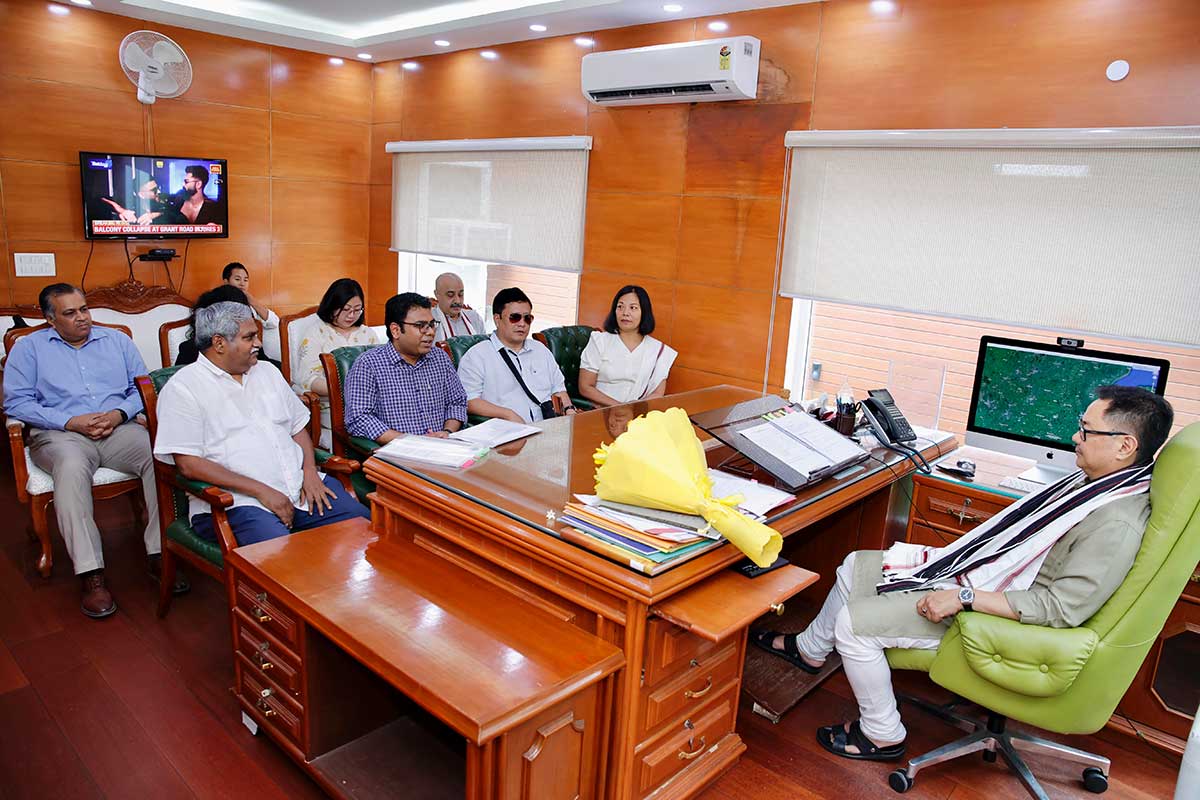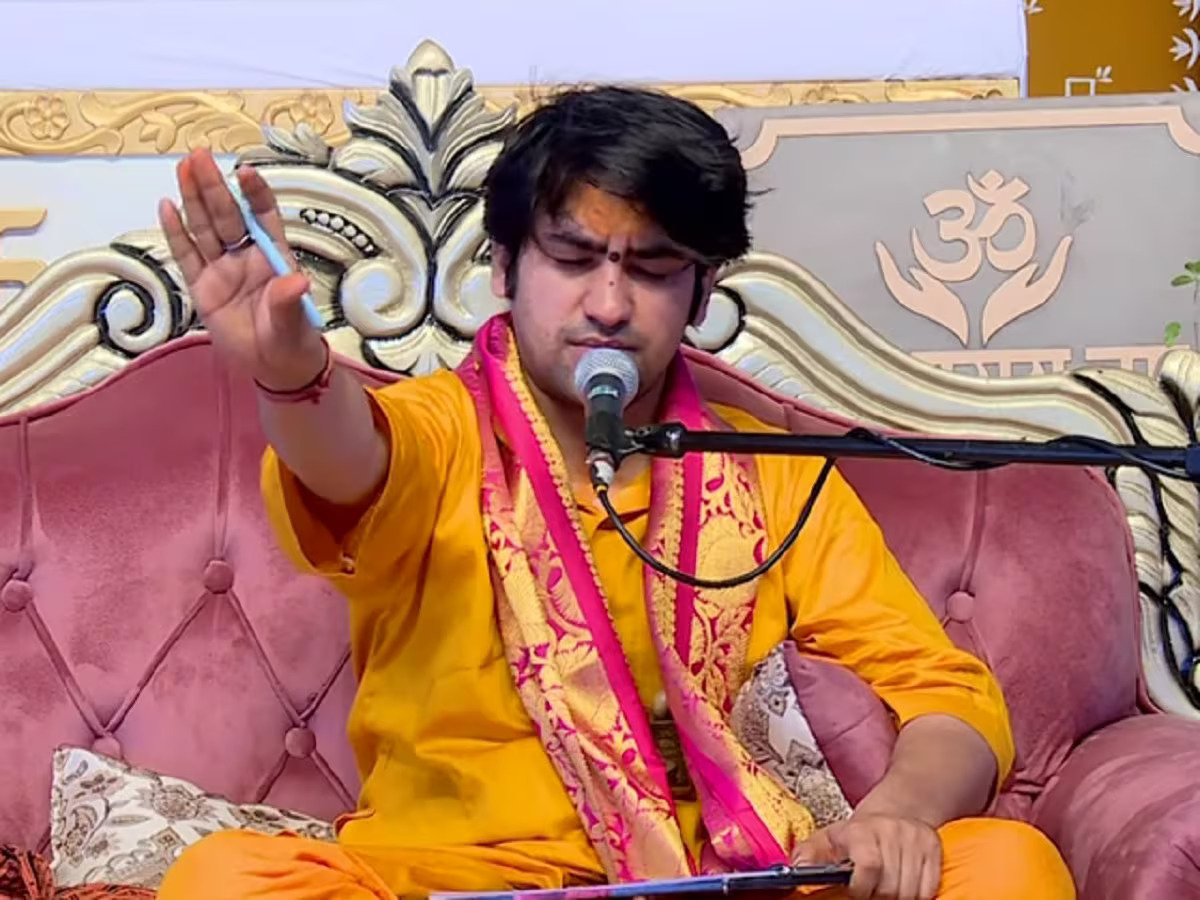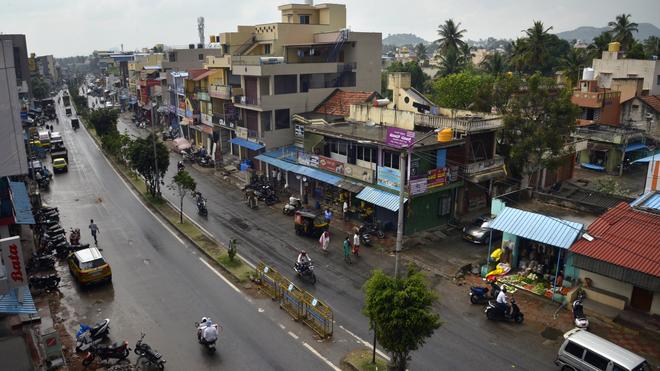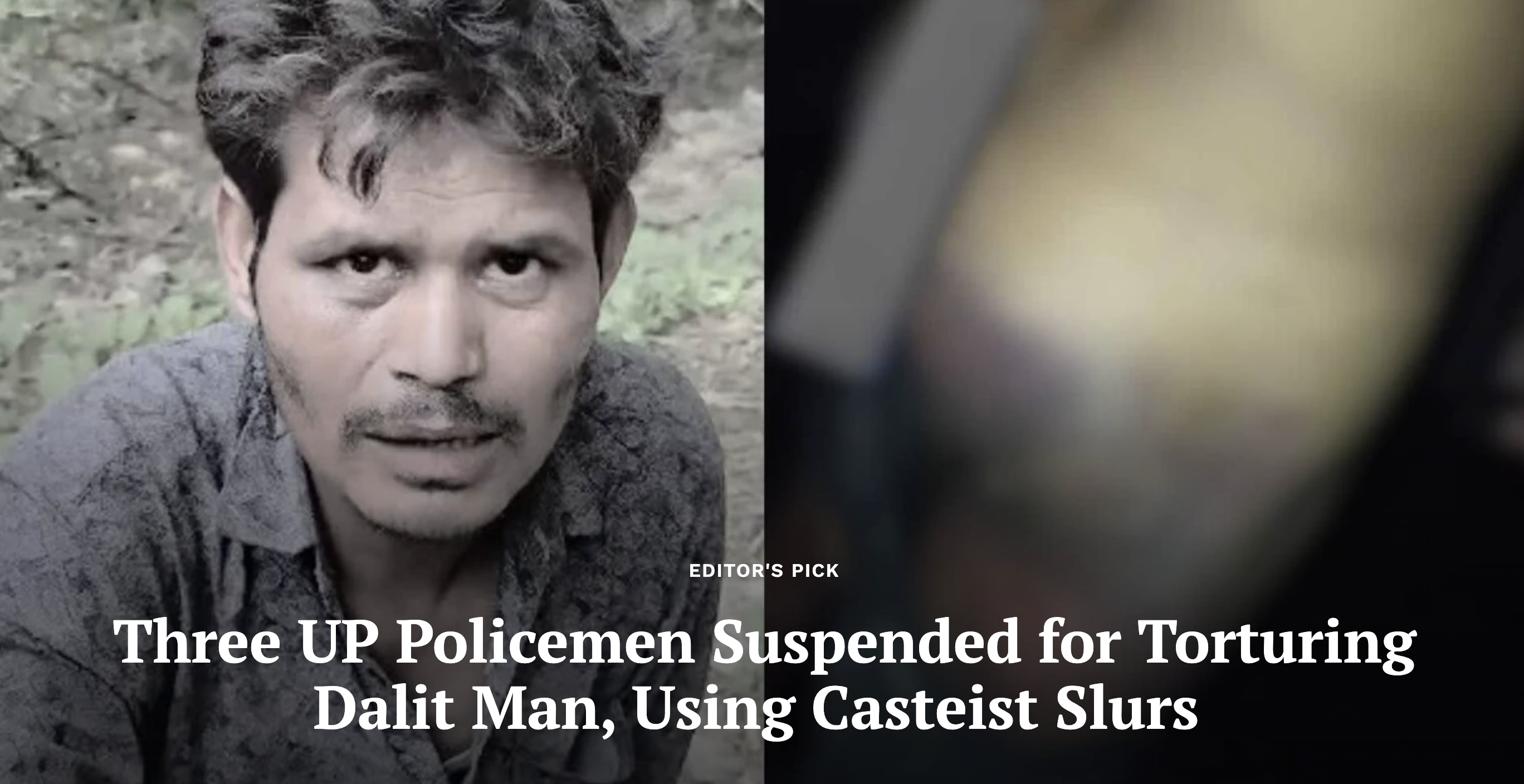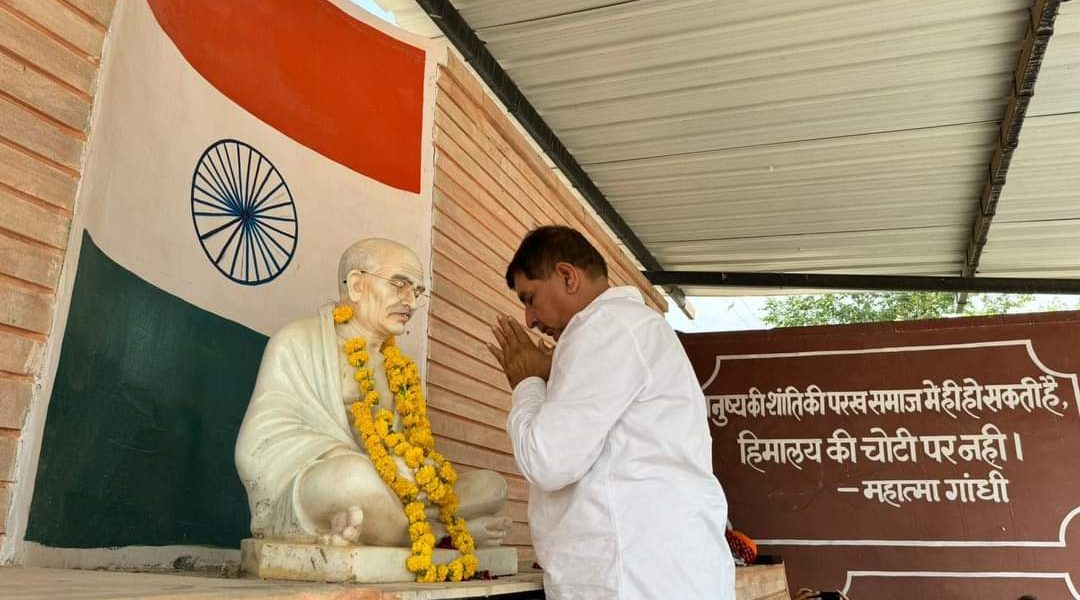
By BETWA SHARMA / Article14
Delhi: Indian cities are characterised by a high degree of inequality in the availability of services like piped water and sewage, with Dalits and Adivasis facing the brunt of the deficit, according to a recent study, Residential segregation and public services in urban India.
“The emancipatory promise of urbanisation has failed to fructify for millions of Dalits and Muslims who are relegated to the spaces with poor public services,” said the study, published by four academics—Naveen Bharathi, Deepak Malghan, Sumit Mishra, Andaleeb Rahman—in the Urban Studies Journal in February 2022.
The study, which combines large scale quantitative analysis using neighbourhood-level national census data for all towns in India with at least 0.3 million residents, has qualitative fieldwork in Bengaluru, home to over 10 million residents.
The latest findings are in line with other studies which find segregated living in Indian cities based on caste or religious identity, with Dalits and Muslims facing the worst discrimination in urban housing, with few signs of improvement 75 years after independence. While prejudice and limited social and economic mobility plague both communities, waves of communal violence have driven the ghettoisation of Muslims in riot-prone cities irrespective of social class, education, and status.
In a paper published in 2021, Fractal urbanism: City size and residential segregation in India, the same four academics had concluded that caste-based residential segregation is rife, even among India’s most urban centres, and the degree of segregation does not vary by the population size of a city or its growth over the last six decades.
A research paper published in 2018 by three of the four authors—the first-ever attempt to use enumeration block-level data (released in 2015) to study caste-based residential segregation in India— found that 30% of Delhi’s neighbourhood, 60% of Kolkata’s and 80% of Rajkot’s did not have any Dalits and Adivasis.
Since the Census of India doesn’t make an enumeration of block data of religions public, it is difficult to study residential segregation along religious lines.
Of the four co-authors in the paper published in the Urban Studies Journals in February 2022, Article 14 spoke with Naveen Bharathi, currently a fellow at the Centre for the Advanced Study of India, University of Pennsylvania, who said that Dalit icon B R Ambedkar’s call for Dalits to move to the cities for emancipation had not come to pass. Another study that Bharathi is working on shows that Muslims are the most segregated community in urban Karnataka.
“The utopian idea of urbanisation is that there is some anonymity—identities and where you come from don’t matter—but it doesn’t happen in Indian cities because Indian cities are organised on caste and religious lines,” said Bharathi. “They can’t really escape their identity. The identity goes along wherever you go in India.”
Writing in The Indian Express in 2018, Christophe Jaffrelot, a senior research fellow at CERI-Sciences Po/CNRS, Paris, explained how a law meant to prevent distress sales and sales under duress in communal riot-hit areas—The Disturbed Areas Act, 1991—had been wielded by the state to restrict Muslims from mixing with other communities in major cities, by allowing Muslims to sell their places to Hindus but not vice versa.
A year before Narendra Modi took up office as prime minister, his government in Gujarat had declared 40% of Ahmedabad as “disturbed,” Jaffrelot pointed out, and more recently, the state government has classified new areas in Surat and Vadodara where no riot took place.
Academics have debated whether the ghettoisation of Muslims is ghettoisation or the voluntary clustering together, which then become Muslim-dominated enclaves.
Muslims, more than any other group, prefer living in urban cities, and while they are subjected to deliberate marginalisation by the state, many ghettos are “ethnic enclaves,” with real ghettos being an outcome of extreme violence as seen in Ahmedabad, according to Muslims in Indian cities: Trajectories of marginalisation, an ethnographic study of Muslims living in 11 cities in India— —Mumbai, Ahmedabad, Jaipur, Lucknow, Aligarh, Bhopal, Hyderabad, Delhi, Cuttack, Kozhikode and Bangalore—edited by Jaffrelot and Laurent Grayer and published in 2012.
In the 2017 paper, Muslims in Indian cities: Degrees of segregation and the elusive ghetto, Raphael Susewind, a political anthropologist of urban India at King’s College London, has studied the same 11 cities using statistical indices of segregation and concluded that “the mere extent of segregation is an insufficient shortcut to the phenomenon of ghettoization: a ghetto actually need not be highly segregated and a ‘mixed area’ can be surprisingly homogenous.”
“Consequently, I argue that one should not only distinguish between voluntary and forced clustering but also consider the wider ‘mental maps’ through which inhabitants experience, perceive and judge their city,” wrote Susewind. “Such mental maps specifically help to uncover historical trajectories, feelings of insecurity and the future expectations of people regarding their cities – irrespective of quantitative degrees of segregation.”
“It takes more than segregation to form a ghetto,” he wrote, “Or rather: it takes something else.”
Following the communal riots in New Delhi in February 2020, Bharathi, who we interviewed, wrote in The Print that urban residential segregation precipitates communal violence in India. Referring to Susewind’s finding that Delhi and Ahmedabad are the most segregated cities for Muslims while Jaipur, Kozhikode and Lucknow are the least segregated, the authors noted that Jaipur and Lucknow had not seen communal riots in the past many decades.
The piece cited research by Kashif ul Huda and Kamrun Nehar, based on membership records of all housing societies (2000) registered in New Delhi in 2012, where they found that 70% of housing societies had no Muslims.
A 2008 study of the 2002 Gujarat riots by Erica Field, an economist at Duke University—Segregation, rent control and riots: the economics of religious conflict in an Indian city—found that violent neighbourhoods were typically low-income mixed neighbourhoods in the mill areas of Ahmedabad, where Hindus and Muslims lived close to each other.
In a 2011 study—Spatial distribution of riots: patronage and instigation of communal violence in Gujarat— political anthropologist Ward Berenschot showed that the mill area neighbourhood where a local leader of the Bharatiya Janata Party (BJP) called the shots was violent, but a neighbourhood with a multi-ethnic committee prevented violence. He found that “violence is more likely in neighbourhoods where inhabitants gain access to state institutions through patronage networks that derive electoral gains from communal violence.”
In a 2015 paper—Urban rental housing market caste and religion matters in access—economist Sukhadeo Thorat found that house owners in the national capital region of Delhi deny housing to both Dalits and Muslims, with Muslims experiencing greater discrimination.
The study found outright rejection is the common reaction in most cases of Muslims, particularly if the landlord happens to belong to the highest Hindu caste. Muslims are denied housing under the pretext of vegetarianism and “sometimes have even been openly advised to look for housing in a Muslim locality, thereby reinforcing the concept of residential segregation in the city.”
In this interview, Bharathi spoke of the persistent and pervasive discrimination against Dalits and Muslims in urban cities.
“Residential segregation is a reflection of how a society is organised,” he said. “It is just a physical and spatial manifestation of what we are as a society.”
What does the intracity spatial inequality in the availability of piped water mean?
Some localities in some parts of the city have better access to piped water and sewerage facilities compared to other parts of the city. There could be a variation in the provision of public goods in the same ward. One part of a neighbourhood may have piped water, and the other might not have access to piped water. There is also a difference in quality—a lower-income part of the neighbourhood may get water supply for 2-3 hours compared to other parts of the city. So there is inequality in the services provided within a city. This happens in most Indian cities. In our paper, we unpack the political channels that link residential segregation with access to public services such as piped water and sewerage systems. ‘Micro-segregation’, or neighbourhood residential sorting within a ward, which is the elementary administrative and political unit, enables segregated neighbourhoods to organise better and petition public services. The political competition further amplifies these demands from segregated neighbourhoods.
The “political channels that link residential segregation with access to public service.” What does this mean?
Imagine there is a neighbourhood where most of the residents belong to a similar socio-economic group. They can come together to bargain for better public goods for the neighbourhood, like water and sanitation. In a way, it is like how a union works. Findings from our qualitative research suggest that the positive micro-segregation channel works through a virtuous cycle triggered by the ability of socially homogeneous neighbourhoods to mount effective claims through community mobilisation for the extension of public services. Given how power is distributed unequally between different social groups, community mobilisation becomes an important mechanism for the marginalised groups to negotiate the complex labyrinth of bureaucrats, political actors, local elites and informal governance institutions.
While segregated neighbourhoods can diminish the power of the marginalised and segregation could also help in building greater in-group cooperation and cohesion in homogeneous neighbourhoods, helping them build an effective ‘bottom-up’ demand for public services.
This mobilisation with or without a local neighbourhood level political leader and the negotiation with various state or parastatal agencies, and elected representatives, is what we mean by a political channel.
You write that the state indulges in favouritism and discrimination. How does the state do that?
In some areas, the state provides better public amenities such as water, electricity, and asphalt on the roads regularly. In some neighbourhoods, they don’t. The state does not treat everyone equally. The state is political. You do give services to those who voted for you, and you don’t to those who did not. The Bangalore South MP, for instance, pointed out that Muslim majority wards didn’t vote for BJP. It has been easy for political leaders to find out which neighbourhood voted for them or not since the introduction of EVMs. It’s easy to find the distribution of votes at a very micro level. In diverse and hierarchical societies like India, political leaders indulge in ‘top-down’ favouritism or discrimination so that certain ethnic, racial, or caste groups have better access to public services and amenities.
You write that the emancipatory promise of urbanisation has not fructified for millions of Muslims and Dalits who are relegated to spaces with poor public service.
Ambedkar said that when Dalits move into cities, they can escape caste. Muslims have moved to urban cities from rural areas for a long time. The utopian idea of urbanisation is that there is some anonymity—identities and where you come from don’t matter—but it doesn’t happen in Indian cities because Indian cities are organised on caste and religious lines. They can’t really escape their identity. The identity goes along wherever you go in India. Another study shows that in a smaller town of 50,000 and a big metropolitan like Delhi of 20 million, the amount of quantified segregation is the same. It is a straight line.
What about Muslims?
In Relative Entropy Framework for Residential Segregation in Urban India (a study that Bharthi and his colleagues are working on), we find Muslims to be the most segregated in urban Karnataka. In a study by Raphael Susewind, a lot of Christopher Jaffrelot’s work finds that Muslims are the most segregated in Indian cities.
Urban riots and because of the current situation, it can be unsafe to be in a diverse neighbourhood. You can be easily targeted. You won’t get housing easily if you are Muslim. Even if you are elite or super-rich, you will be relegated to a few neighbourhoods.
It happens in Delhi, Ahmedabad, and even Bangalore. Even if you are an IAS officer, it isn’t easy for you to get a house in a posh, elite Hindu neighbourhood. Even class does not break this identity or this barrier.
Is Muslim segregation increasing or decreasing?
That we can’t say quantitatively. The data we have is cross-sectional. Riots do increase segregation, but if you ask if Indian cities were more segregated in the 1980s than now, I have no evidence to say that. The anti-Muslim riots happened in 1992 because the Karnataka government introduced Urdu news in Doordarshan, and during my fieldwork, I found out that many Muslim families moved during that time from a diverse neighbourhood to a Muslim majority part of the city for want of safety. No riots can continue without political backing. Anecdotally, the economic boycott that is happening of Muslims in Karnataka is taking away their livelihood and can lead to segregation. What ends up happening is that you move into a ghetto and try to sell things there. It is a multi-faceted problem. Lots of Muslims have moved into Muslim neighbourhoods from diverse neighbourhoods over decades. But, quantitatively, it is hard to put a number to it, but anecdotally you know that no one will give their house to a Muslim anymore.
Are things improving for Dalits?
Residential segregation is a reflection of how society operates. It is just a spatial characteristic of how we as a society operate. With Dalits, there has not been huge economic mobility. There have been some, but not a lot. Largely, they are in the margins. If you see how corporate India works— board members of corporate India—you hardly see any Dalits. The same thing goes for white-collar workers. Even with white-collar workers, some may have fallen through the cracks, but largely the spaces have been exclusive upper-caste bastions. That starts reflecting in neighbourhoods. You can’t afford elite neighbourhoods because you don’t have jobs.
But there has been some political empowerment of Dalits, with both the Congress and the BJP wooing them electorally.
We have to go back to the Poona Pact (1932) between Gandhi and Ambedkar (for fair representation of the depressed classes). If a Dalit has to win in a non-reserved seat or even in a reserved seat, they need the votes of upper castes, and upper castes won’t elect a very vocal and strong Dalit leader. It has always been a problem. Dalits are 15% of India’s population. But still, you are at the mercy of a non-Dalit caste to even get elected and to stay in power. Also, Dalits are not one identity. There are a huge number of castes that political parties then split. The same problem with Muslims. If they want to get elected in a Hindu dominated area, it is not possible.
Is there any improvement?
It’s tough to tell. Right now, the situation is really bad. Real estate prices go down if Muslims and Dalits come and stay in the neighbourhood.
How can things improve?
We don’t have a housing discrimination law. This meat-eating versus non-meat eating pretext—you can’t take someone to court when they say, ‘I want to give it to a non-meat-eating household.’ We need anti-discriminatory laws. Few state governments have included an anti-discrimination clause in the RERA—Real Estate (Regulation and Development) Act, 2016— but it is hardly implemented, and people rarely go to the police station to complain if they don’t get housing or feel they have been discriminated against. Many laws at the state levels require any major neighbourhood, private or otherwise, to reserve some plots or houses for economically weak sections (EWS) or lower-income groups, but it is hardly implemented or manipulated.
If we can’t wait for society to change, we need to legislate change.
Look at the Zoroastrian Co-operative Housing Society case. A Parsi member of the housing society wanted to sell apartments to non-Parsis. The housing society went to court, saying that it violated the society’s bye-laws and the member cannot sell the apartment to a non-Parsi. The society argued that under the constitution, they had the fundamental right to association under Article 19(1)(c), and they could refuse membership to anyone who was not a Parsi. In 2005, the Supreme Court of India agreed with the arguments of the co-operative society and held that the society had a fundamental right to freedom of association, held that the member cannot sell his plot to a non-Parsi in contradiction to Article 15(2) of the Indian constitution which states that “No citizen shall, on grounds only of religion, race, caste, sex, place of birth or any of them, be subject to any disability, liability, restriction or condition with regard to access to shops, public restaurants, hotels and places of public entertainment.” This judgement provided a legal basis for housing discrimination. Many housing cooperative societies are formed along caste and religious lines, and there is no law which prohibits them from doing so. In other words, housing cooperative societies are a proxy for caste-based urban development and are major contributors to caste-based residential segregation in Indian cities.
We urgently need anti-discriminatory housing legislation, and policymakers need to look into this issue. Any caste or religion based cooperative societies and associations should be made illegal.
Does law change society, or does society change the law?
Both. Housing discrimination needs to be legislated. Meanwhile, Dalits and Muslims must be included in society, corporate India, the public and private sector, teaching, and politics, which will slowly start reflecting in our neighbourhoods.
This article first appeared on article-14.com

